


The service paints many vivid pictures of what happens on the Christian way.

If you are engaged to be married and looking for a church to be married in, then congratulations! A wedding is one of life's great moments, a time of solemn commitment as well as good wishes, feasting and joy.

If someone you know and love has died, a funeral led by a Church of England minister can be held in church, in a churchyard, by a graveside, or at a crematorium. The minister will be there to support you every step of the way.






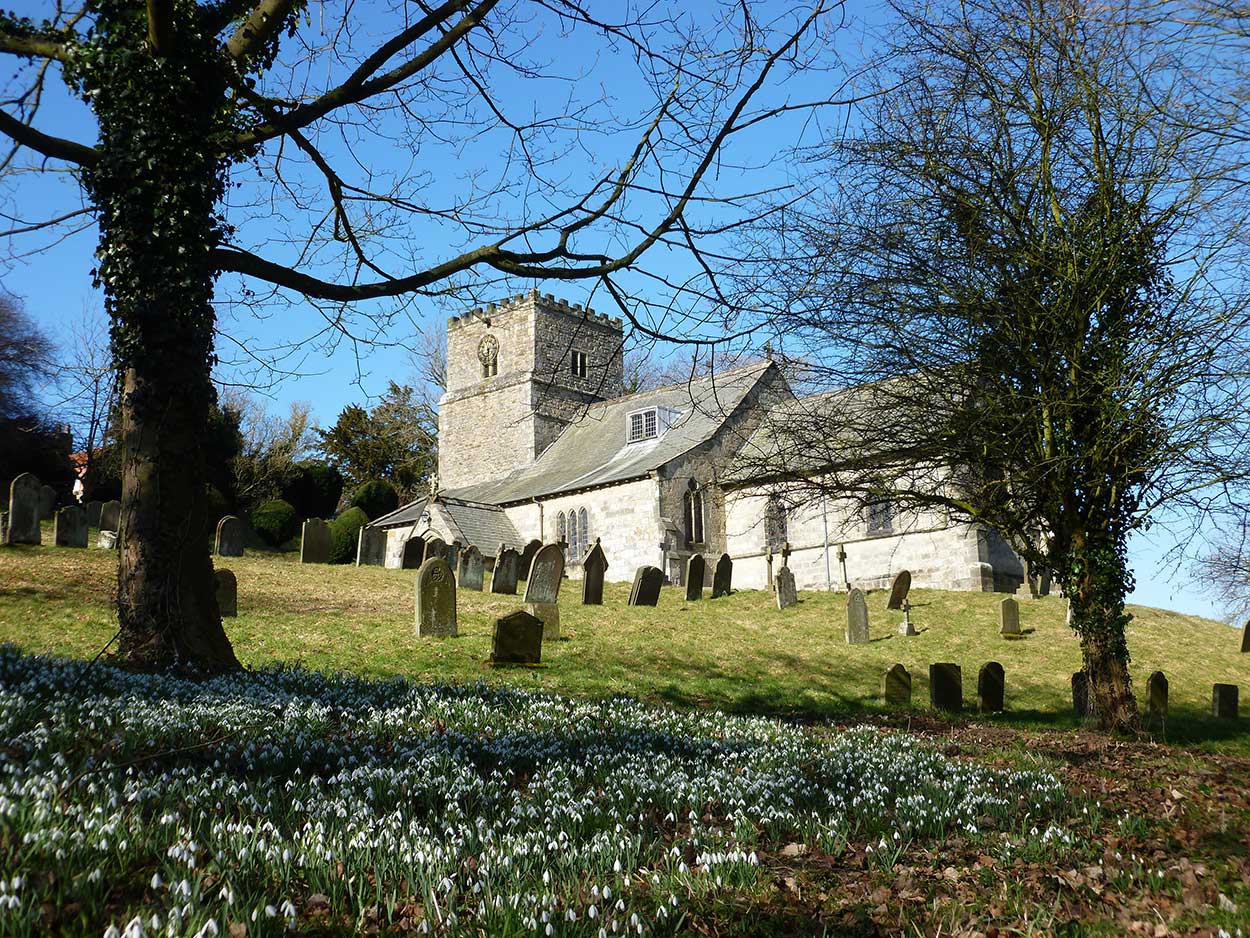
Although partially re-built in the latter half of the nineteenth century, All Saints Church, Kirby Underdale retains many Norman and early medieval features. Situated close to the Hundle Beck, only the tower is visible from the village itself.
The earliest mention of a church in Kirby Underdale is in connection with the founding of St. Mary’s Abbey in York in 1085. The church was included in the grants of lands at Kirby Underdale. A charter of William Rufus, dated 1088, confirms that William the Conqueror had given to St. Mary’s Abbey ‘what Hernegrine the monk held, that is, Paines Thorp, and whatever he had in Kyrkeby and Uncleby’. In 1156 we find a charter of Henry II stating that Hernegrine – a king’s thegn before becoming a monk – had given to St. Mary’s Abbey ‘Kireabi in Hundolvesdale and the Church of that place’.
The present church dates from the twelfth century and is likely to have been erected by St. Mary’s Abbey for their tenants. The Abbey retained patronage of the benefice until the Dissolution of the Monasteries in 1539.
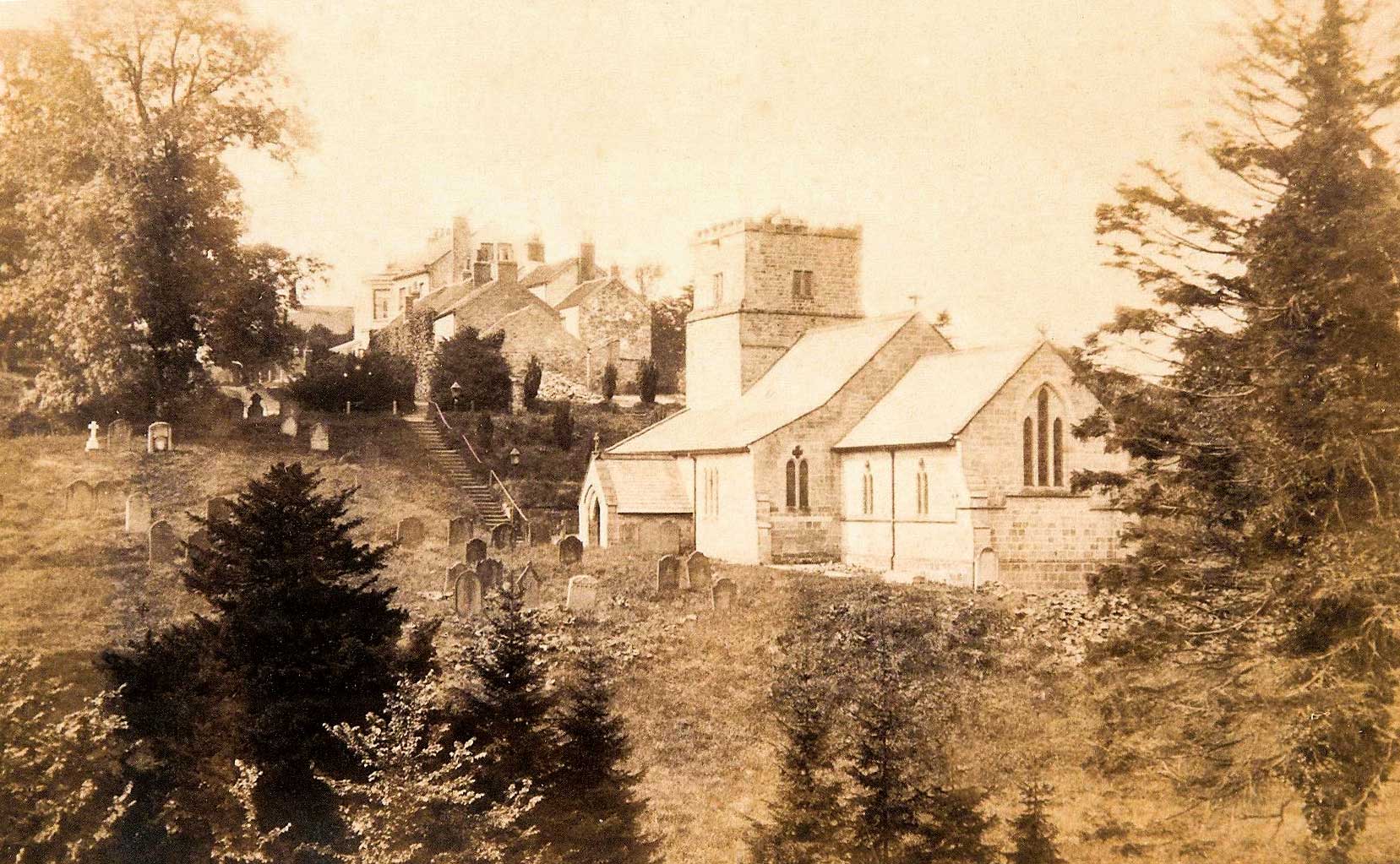
Kirby Underdale Church soon after its restoration in 1870. Note the rubble in front of the re-built chancel. Restoration of the church cost a total of £2000. Much of the cost of repairing the nave and the tower was borne by the first Viscount Halifax and Rev. T. J. Monson
All that remains of the twelfth century church is the lower part of the tower and the nave. These date from around 1150. Originally the church would have consisted simply of a tower, a nave without aisles, and a chancel. The present chancel dates from the 1870 restorations of the church under G. E. Street. The remains of the original windows which lit the nave can still be seen above the arches to the north and south aisles which were added in about 1200. The vestry was built in 1828.
There are many notable features within the church. Over the chancel arch is a rood which was erected in 1887 by Viscount Halifax from a design by Temple Moore. The figures were originally plain wood. The rood was re-decorated with gold and colour in 1932. It was at this time that Lord Irwin arranged for dormer windows to be inserted into the roof of the nave. The light provided by the dormer windows and the addition of colour to the rood enhanced the visual impact. In the words of Canon Shepherd, ‘The whole of the colouring is harmonious and well-balanced, and the appearance of the interior of the church is greatly enriched.’ The re-decorated rood was dedicated by Dr William Temple, Archbishop of York, on 25th July, 1932. Afterwards Lord Irwin provided tea for parishioners and visiting clergy in the schoolroom.
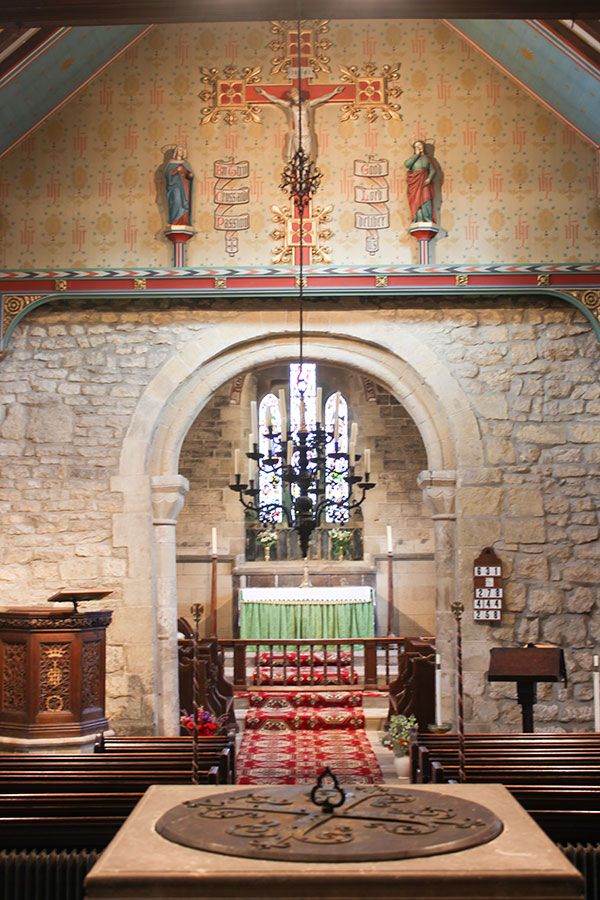
Looking from the tower towards the east of the church. The communion rails are in memory of Canon Shepherd, rector of this church for over fifty years. He wrote The History of Kirby Underdale and also a history of this church to which I am indebted in this booklet.
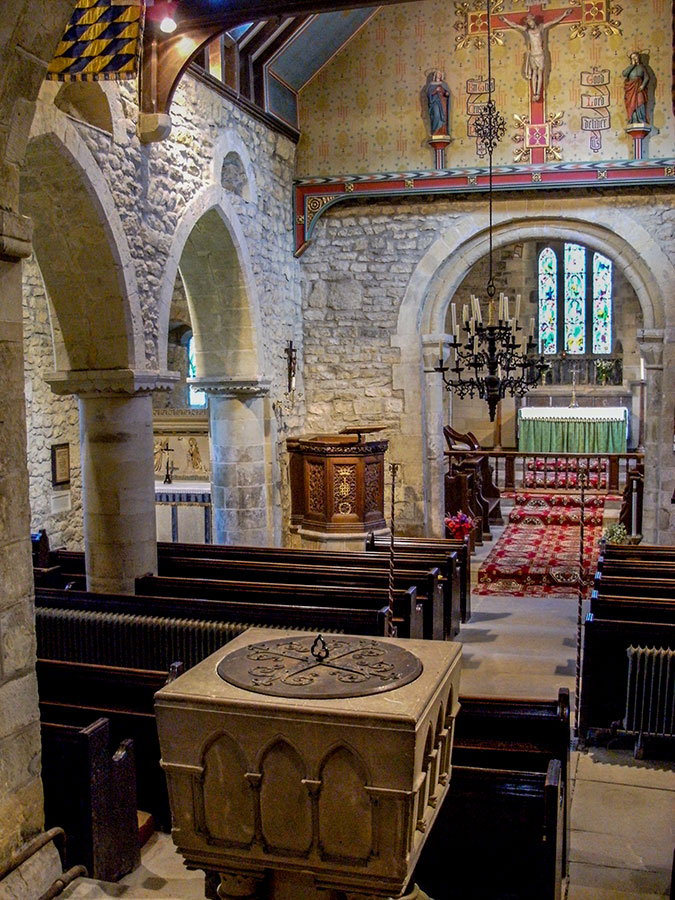
Looking from the tower towards the east end of the church. You can see the remains of the original windows of the church above the arches to the north aisle.

Looking towards the tower from the chancel. You can see the blocked up aperture above the tower arch as well as the banners bearing the coat of arms of the Wood family to whom there are many memorials within the church. The doorway above the tower arch came to light in 1913 when plaster was removed from the internal walls of chancel and nave.
The font currently in use is relatively modern. Of Caen stone with Irish marble pillars, it was presented by Archdeacon Long. The octagonal fourteenth-century font, once relegated to the churchyard, can now be seen near the vestry door.
The pulpit and alms box were carved by Grace Beresford-Peirse of Bedale. She was a niece of Rev. T. J. Monson. In addition to being an accomplished wood carver, Grace was also a highly skilled artist and illustrator.
The sanctuary lamp was given to the church by the family of Dr. P. A. Wedgwood of Painsthorpe Hall. Churchwarden for six years, he died in Jerusalem during the First World War and is commemorated in the war memorial window in the south aisle. The candleabra is, I believe, of seventeenth-century Spanish origin.
In the north aisle there is a carved figure which was unearthed in the garden of Kirby Underdale Rectory in 1912. Once believed to be of Mercury, it is more likely to be a Celtic fertility symbol. The stone had no doubt been used in the building of the chancel but discarded when the chancel was re-built.
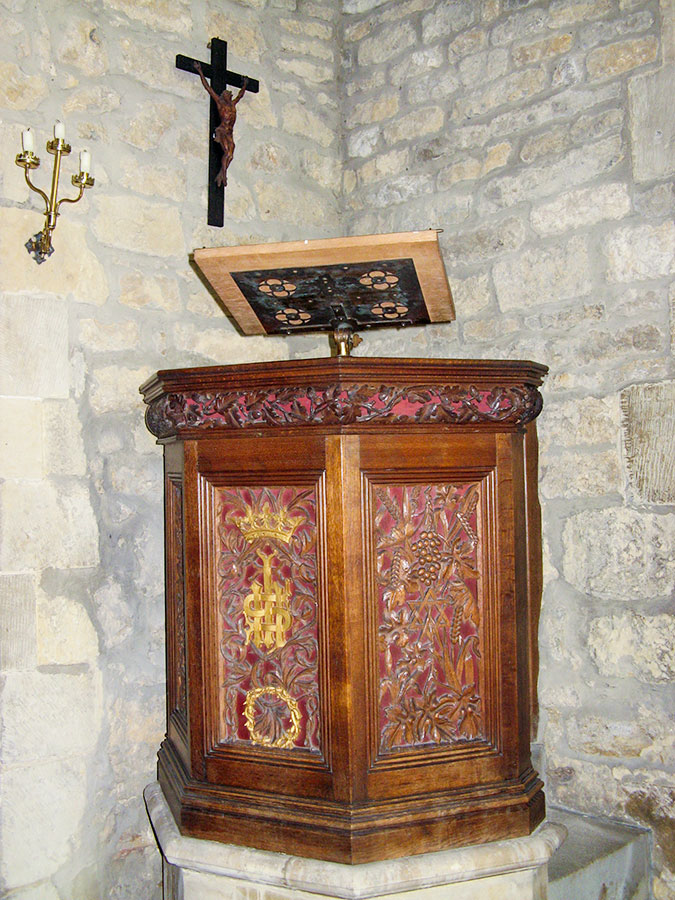
The pulpit and alms box which were carved by Grace Beresford-Peirse. There was a close family connection between the Beresford-Peirse family and the Monsons.
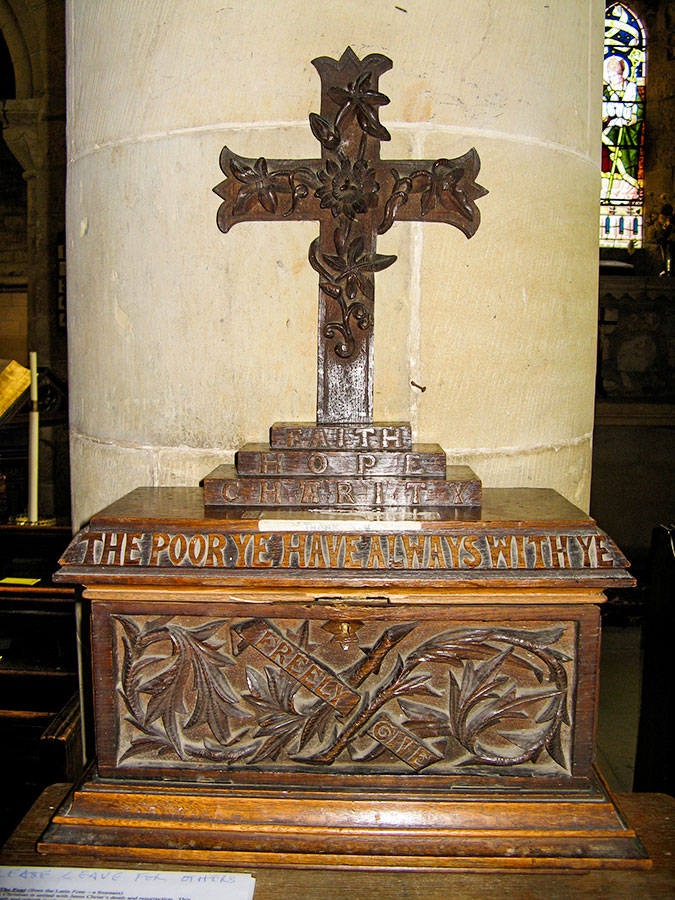
The alms box

The Mercury Stone in the north aisle.
In the north aisle are many memorials to members of the Wood family. On the west wall is a memorial to Peter Wood who was killed at El Alamein.
There are also two memorial windows. One window, by F. C. Eden, commemorates the life and work of Charles, second Viscount Halifax, who did much to try to unite the Anglican and Roman Catholic churches. The second window is a Sep Waugh creation dating from 1991 in remembrance of Charles, the second Earl of Halifax, and his wife, Ruth, Countess of Halifax.
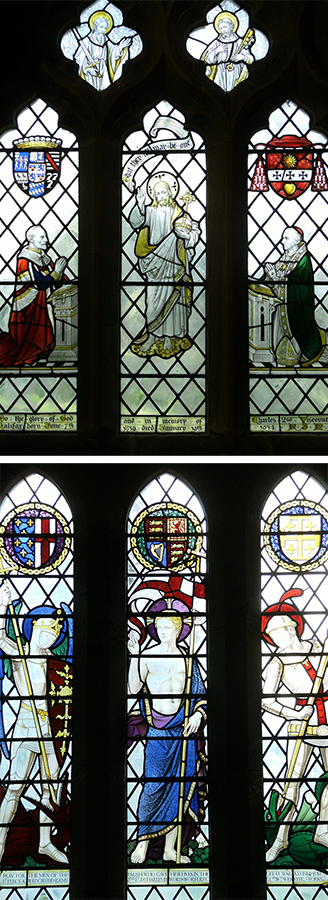
.jpg)
With its bright colours and striking images, this window brings light to a dark corner of the church.
The east window of the church is a Tree of Jesse window by John Hardman. This dates from 1871. In the south aisle is a window by Burlison and Grylls. Dating from 1889, this window represents St. John of Beverley and St.William of York and was erected in memory of Rev. T. J. Monson. The other window in the south aisle is a war memorial window by J. N. Comper. With the Risen Christ in the central light and St. Michael and St. George in the left and right lights respectively, this window is a memorial to the three men from Kirby Underdale parish who died in the First World War: Lieutenant Percy Wedgewood, Second Lieutenant John Charles Ditch Wordsworth and Lance Corporal William Webster.
In the churchyard is the base of a cross known locally as ‘Harold’s Chair’. This used to stand in a field near South Wold known as Stone Chair Close. It was first moved to the road, then to South Wold farm and finally to the churchyard.
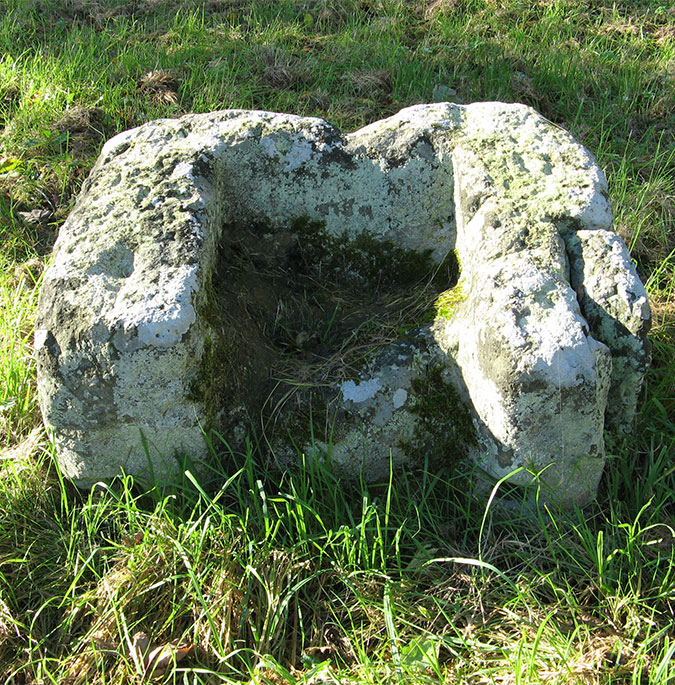
Harold’s Seat’, the base of a stone cross in the churchyard.
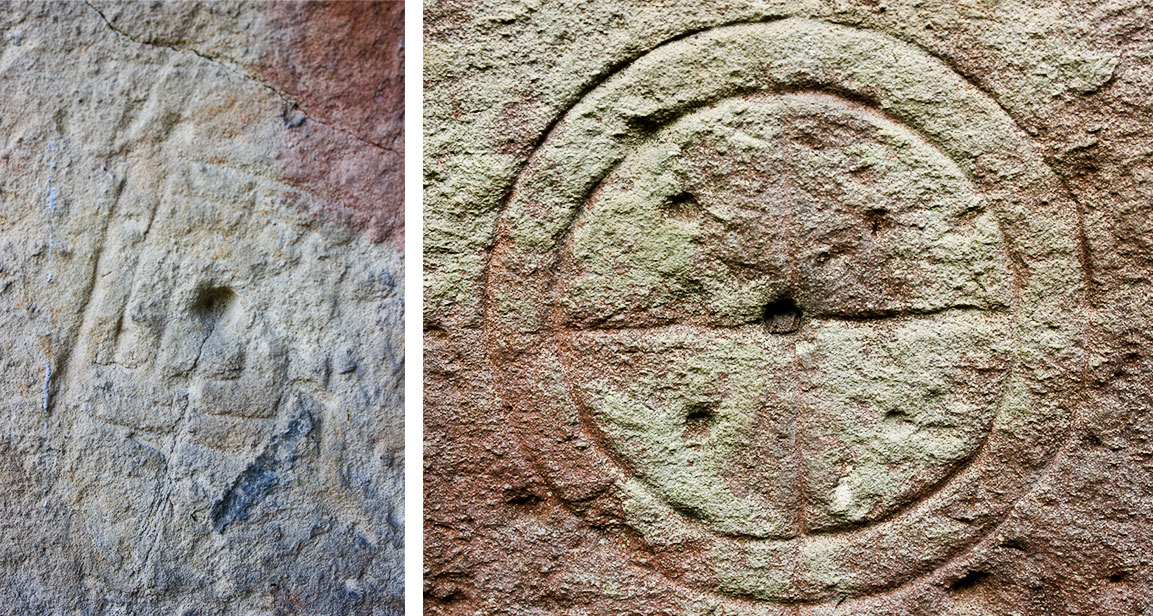
The merel table (left) and scratch dial (right) on stones that have been re-used in the building of the church.
There are several interesting features to be seen outside the church building and in the churchyard. Above the porch is a cross carved by Matthias Garn, a German master mason from Bugthorpe. The original cross which it replaced is in the blocked up north doorway which is now in the north aisle but which was once, most probably, in the north wall of the nave of the church before the aisles were added.
On the western wall of the vestry is a scratch dial. The object of a scratch dial was to indicate the hour for mass. This stone would have been re-used when the vestry was built in 1828. Also of interest, on the eastern wall of the south aisle, is the merel table etched into the stone. Before this stone was used it may have formed part of a grave slab. As the south aisle was built around the start of the thirteenth century, this makes this particular stone very old indeed. The game of merels was still being played in the parish well into the twentieth century.
Outside the vestry is a stone coffin which was dug up beneath the floor of the church during the restoration on 1870. It may have been the coffin of Roger Wilberfoss whose tombstone is in the porch or else of one of the rectors. For many years it was used as a water trough for cattle in a field on Howe Hill.
All photographs ©Ruth Beckett.
All text ©Ruth Beckett. Incorporating information from Canon W. R. Shepherd, The History of Kirby Underdale